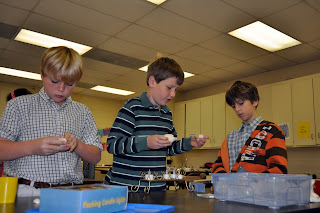Hi Godly Play Teachers!
Welcome to
The Ten Best Ways, the Godly Play story scheduled at
our church for this coming Sunday, Sept. 20. You can find the story in
Exodus 20:1-17, Deuteronomy 5:1-21. The Godly Play script can be found
in the 14 Presentations for Fall book (the orange one), p73-80.
I love that Godly Play refers to the Ten Commandments as The Ten Best
Ways and places them in a heart shaped box. This helps us remember that
our God is not a supreme dictator who exists just for the chance to
squash us when we don't adhere to his rules, but is instead a God who
loves us enough to want to give us boundaries, so that we can fully
enjoy the life God meant for us.
In preparation for teaching the lesson, it's good to look back at the
session that precedes it: the Exodus. God has led his people out of
slavery, away from Pharaoh and the soldiers chasing after them,
through the sea, into freedom. Now they can live where they want, do
what they want, be who they want. As the story script says, "Now that
the people are free...where will they go now? What is the best way?"
Thank goodness (and thank God!) that God provided divine guidance, motivated completely by love.
What to focus on? Here are some
general ideas :
1. The younger classes (first grade and younger) might choose to keep
things simple by focusing on the first heart in the box: Love God, Love
People, God Loves You. Or, depending on the children, you could go
deeper and study all the commandments. You probably have an idea of what
the children can handle best.
2. Study each of the commandments by reproducing them in some way.
3. Explore the idea of Moses being the only one with the courage to
climb up into the fire and smoke to meet God. Children will find it
interesting that God wanted to protect Moses from his powerful presence,
so God put him in a crevice in the rock and put his hand over him until
he had passed by, allowing Moses to see his back. I love the line,
"When we see God's back, we can follow God all of our days."
4. The older children may benefit by exploring the conflict that comes
when we find ourselves stuck between two commandments, like when Grandma
gives you a present that you don't like and asks you what you think of
it. How do we love others and still stay true to the truth?
We should also address more close to the heart conflicts, like divorce.
Many of our children are experiencing divorce and will be listening
especially to the Best Way of honoring marriage. We need to be sure to
include in our session a focus on grace and forgiveness. Sometimes
people try their very best to honor the Ten Best ways, and it just
doesn't work out. God always offers love and forgiveness to all. His
love never stops, no matter what.
Art Response Ideas:
* Thanks to
Charlie Bryan, we still have 35 beautiful pieces of slate and granite that could
be used for a Ten Best Ways project. Keep in mind that most classes except our first graders did this project last year, so you might want to do something different- or maybe not. A class could let each child paint
or write one commandment on each piece for a classroom set, or each
child could have his own and use sharpie markers to write all ten on one piece of stone. I'll have them on a cart in the hallway.
* Give the children big construction paper hearts divided into the
sections Love God, Love People, and God Loves You. "I wonder how you
could illustrate each section?" Children could choose whether to draw
or cut pictures from a magazine or paint with watercolors. Or children
could work together on one huge heart of butcher paper, contributing
illustrations for each section. (This idea is especially for the younger
children.)
*Let each child make a set of commandments, painting the tablets with
watercolors after they write their version of the Ten Best Ways. It's
beautiful...see
here.

*See this version done on slate.
* I wonder if we could make a Mount Sinai? (With a cleft for Moses to
hide in!) Could we make Moses out of a clothespin? How would we make the
Ten Best Ways?" The youngest children might need ideas from which to
choose.

*Could
we make a huge set of Ten Best Ways together for our classroom? As tall
as a child? Could we illustrate each commandment? Which one would you
like to work on?

*I
wonder what materials we might use to make individual sets of Best Way
hearts, so that you can take it home with you. (You might want to see
what kind of interesting materials you can find at a craft store. Save
your receipts and I'll reimburse you.)
*I wonder if you can make up hand motions to illustrate each individual
Best Way? Could you split them up among children and videotape each one,
making a video the whole class can enjoy? (If somebody does this I'd
love to share it with parents!)

*I
wonder which is your favorite commandment? Would you like to
concentrate just on that one, making a 2 dimensional or 3 dimensional
representation of it? (a drawing or collage or making a scene out of
play clay, etc?)
Obviously, we wouldn't want to present ALL of these options to the
class, as that might be too overwhelming. But it's a list I hope will
help you...and get you started thinking of your own ideas.
Speaking of other ideas, I'd LOVE to hear yours in the comments section if you want to share!
Love, Becky






























